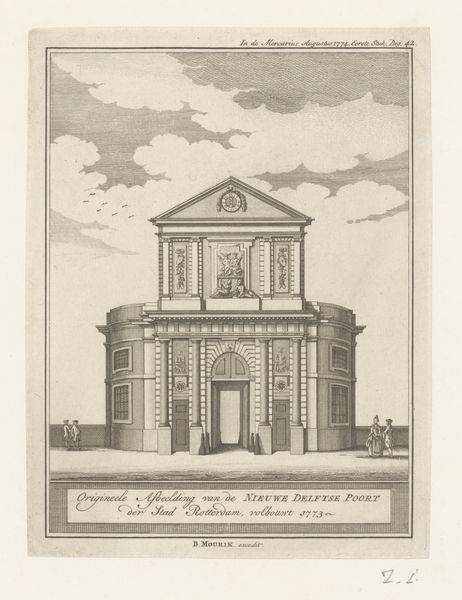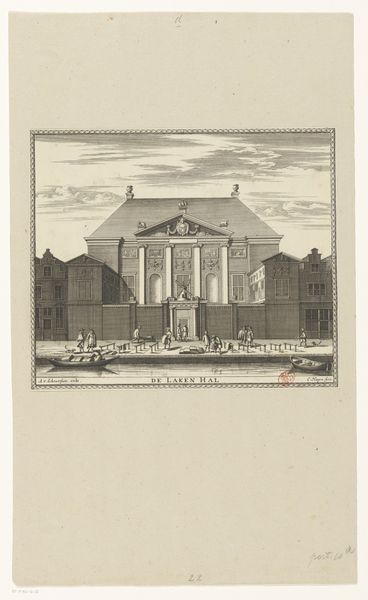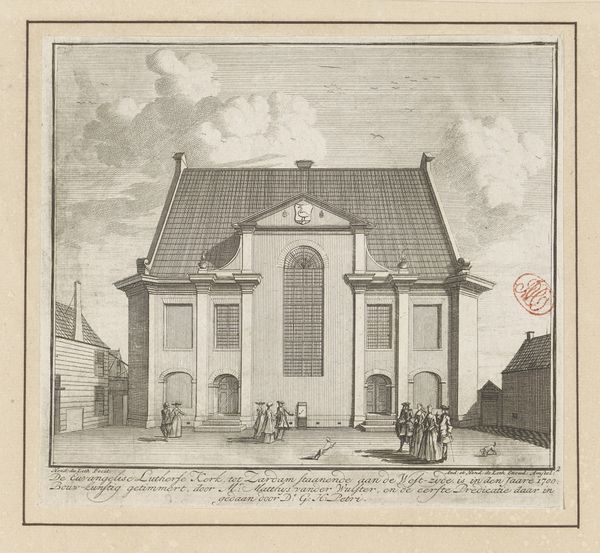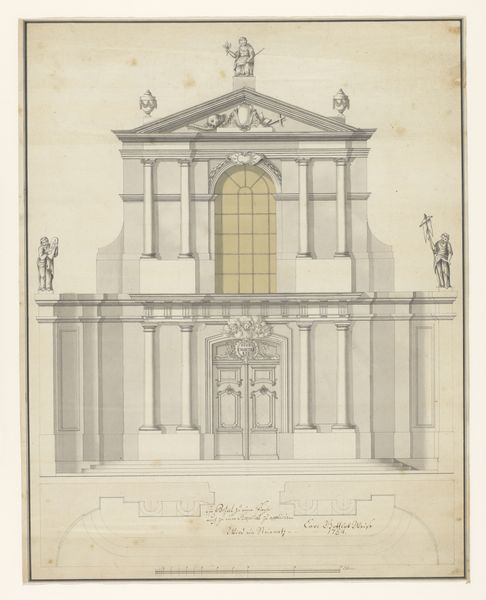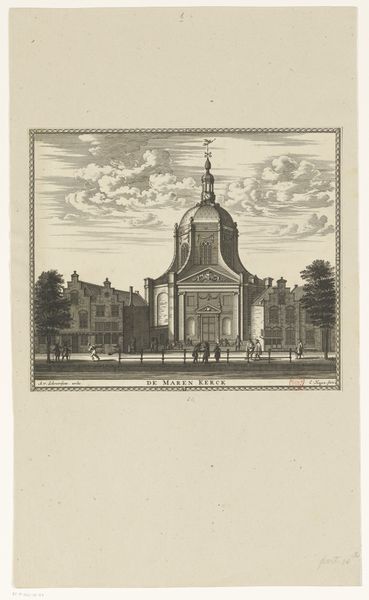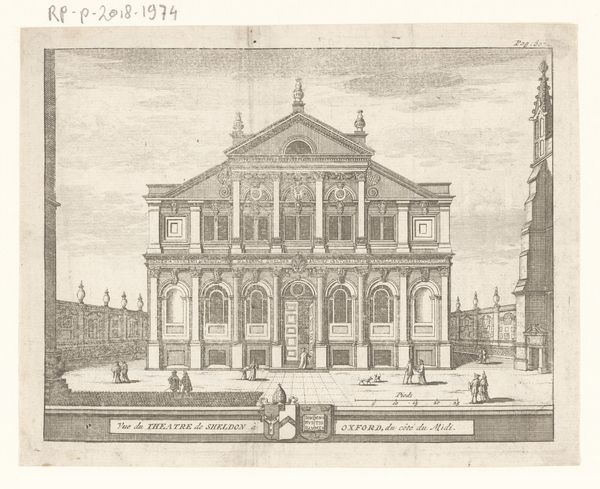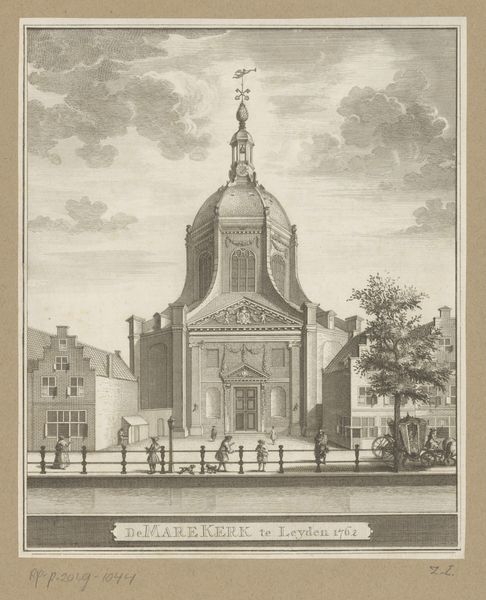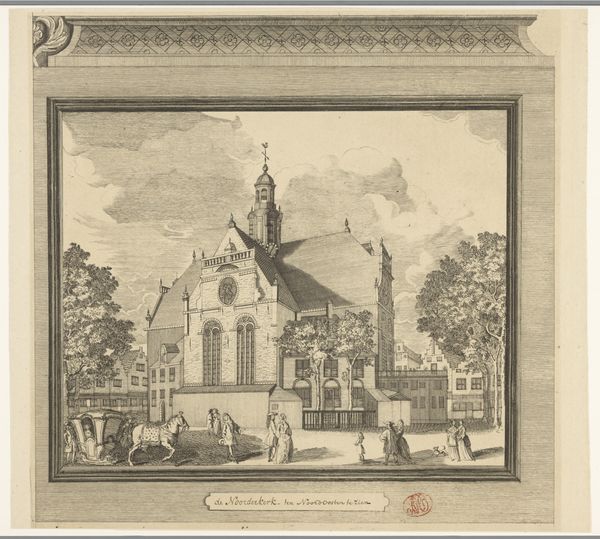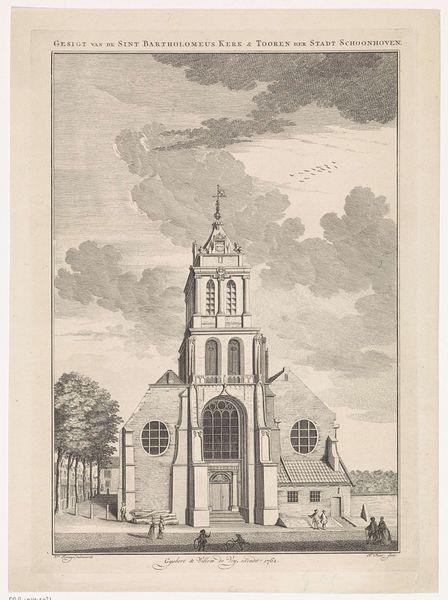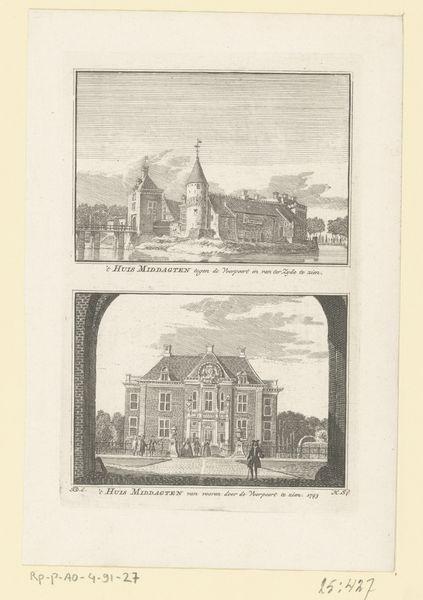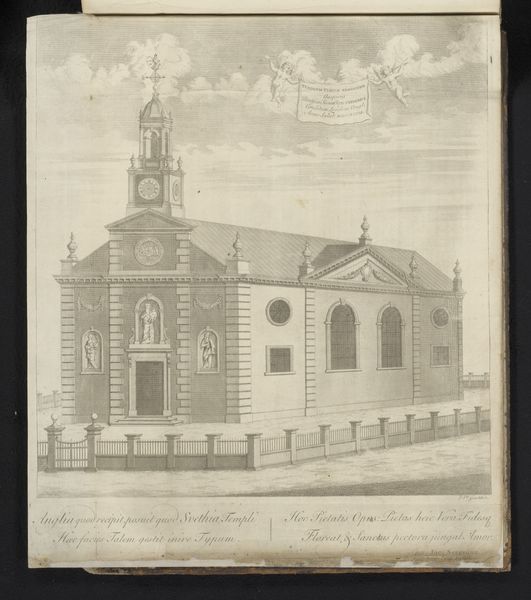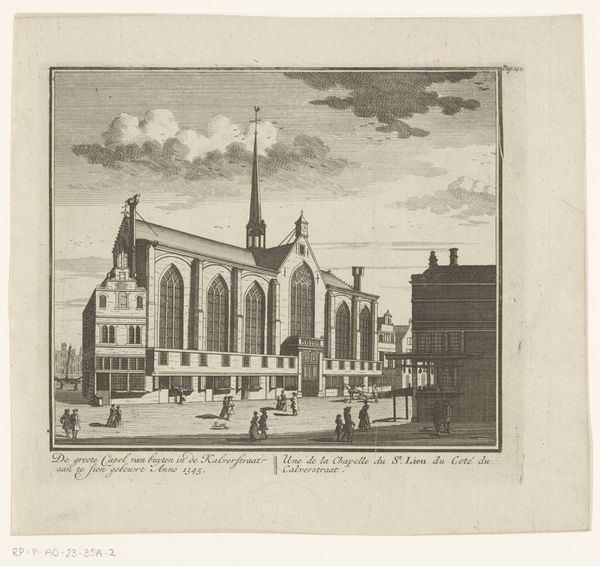
print, etching, engraving
#
neoclacissism
# print
#
etching
#
etching
#
cityscape
#
history-painting
#
engraving
Dimensions: height 285 mm, width 239 mm
Copyright: Rijks Museum: Open Domain
Art Historian: Johann Gottfried Pflugfelder’s “Gezicht op de Luthersche kerk in Den Haag,” from around 1791, a print using etching and engraving techniques currently held in the Rijksmuseum. I'm immediately struck by its detailed depiction, but the lines are somewhat austere, creating a reserved feel. What's your take? How do you interpret this work? Editor: I see it less as a singular artistic creation, and more as a document reflecting social dynamics and the economics of printmaking. Art Historian: Interesting. Expand on that a bit? What aspects of the materials and production processes lead you to that conclusion? Editor: Well, as a print, its inherent purpose is reproduction and distribution. The choice of etching and engraving indicates a desire for detail but also scalability. The existence of multiple copies means it reached a broader audience than a unique painting ever could. This makes me consider who the intended consumers were and what purpose the image served within that social context. Art Historian: Precisely. So, if we consider the labor involved—the engraver's skill, the printmaker's process—how does that influence our understanding of the image? Does it become less about individual genius and more about skilled craft within a capitalist framework? Editor: Yes, absolutely. And thinking about the cityscape theme, it might reflect the growing urban environment, but I see it equally as the rise of middle-class consumers and print markets during that era that can shape how the work is made and how artists work. The historical background provides additional context about where it lies culturally Art Historian: So, you are emphasizing that materials and its circulation of art play a critical role here. By emphasizing the societal impact on both the image, production and intention, our impression of the piece can expand and evolve.. Thank you for shedding more light! Editor: Thank you! This was really illuminating and thought-provoking for how I understand this type of art.
Comments
No comments
Be the first to comment and join the conversation on the ultimate creative platform.
